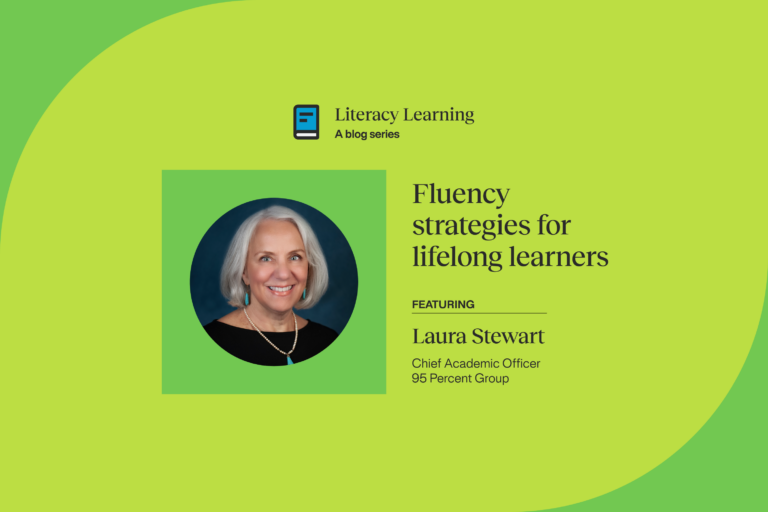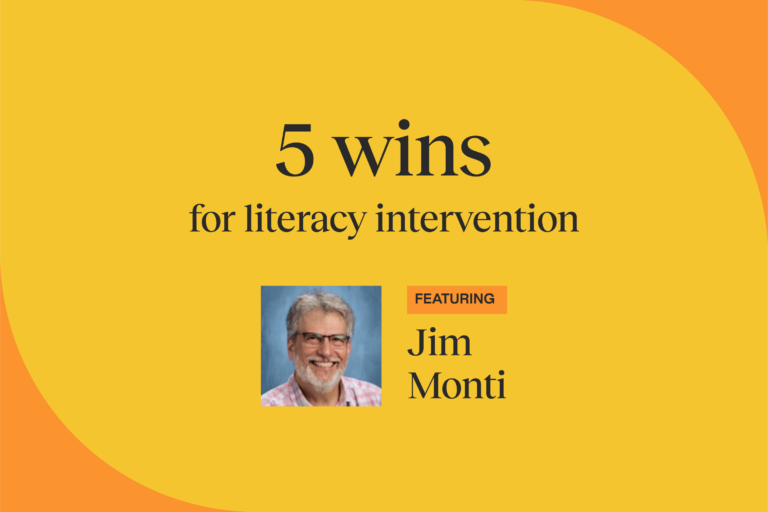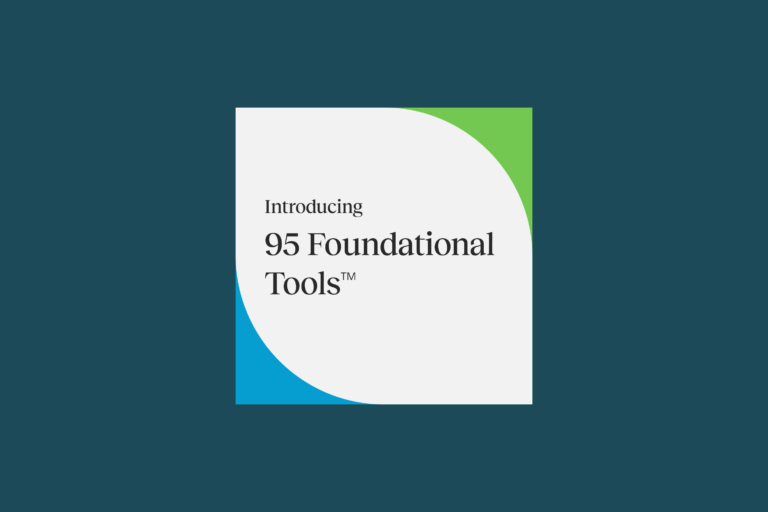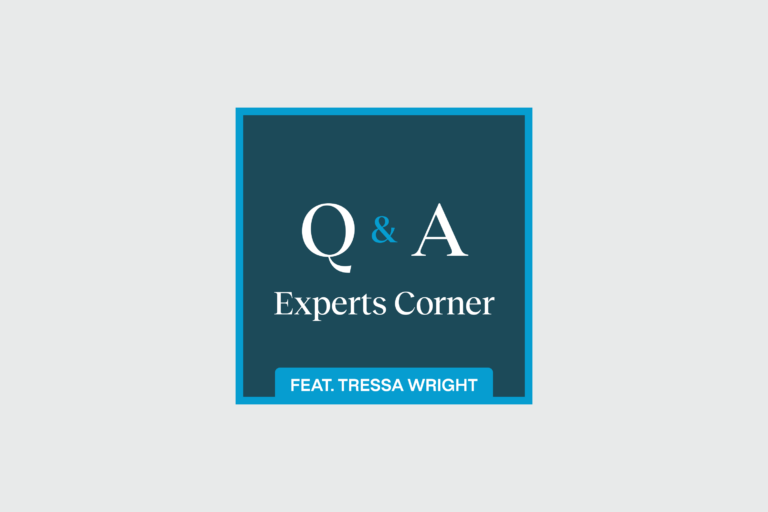Experts corner: Building a solid foundation for reading skills
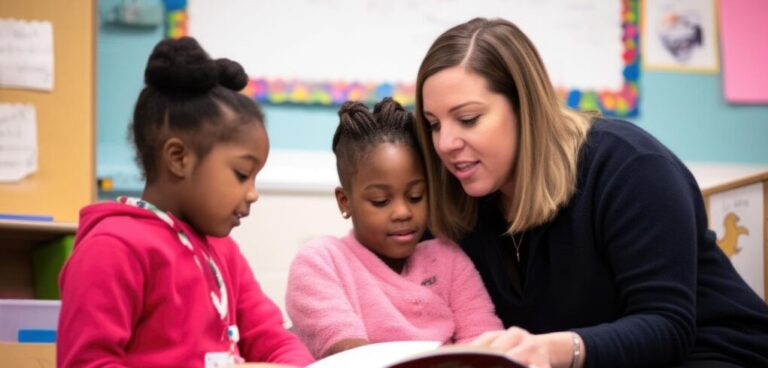
Q&A with Joni Maville, literacy expert
Recently we had a conversation with Joni Maville, director of content development at 95 Percent Group. As a former grade 1-3 teacher, K-3 reading coach, and K-8 teaching and learning specialist, Joni understands the critical need to close literacy skill gaps as early as possible for all students to help them become joyful, confident readers. Joni provided her insights on the new 95 Phonemic Awareness Suite™ and why it is a “true game changer” for unlocking the power of literacy for every student. Read on to hear why this new suite matters, how it is unique in the market, and how it is poised to help improve literacy in our nation’s schools.

Why is this new phonemic awareness product suite so important?
Phonemic awareness is one of the key predictors of early reading success, and this product is a true game changer for supporting that success. It is based on extensive research and addresses a gap in the way phonemic awareness is currently being taught.
Unlike existing programs that add letter sounds as an afterthought, our program integrates phonemic awareness and letter instruction from the ground up and helps students make strong connections between sounds and letters. This approach has been proven to increase students’ letter sound knowledge and spelling performance, particularly when introduced in kindergarten and continued through first grade.
This is the phonemic awareness suite every school needs to help students truly grow into readers in 1st grade.
How is this product different from other phonemic awareness offerings in the market?
This is a unique offering for schools. It does not currently exist in the market. Our program empowers teachers to provide explicit, sequential, systematic, and comprehensive phonemic awareness instruction to their students. In short, one of its biggest differentiators is that it is evidence-aligned and evidence-based. Another is that it supports differentiated instruction across tiers, which means it serves each child’s individual skill needs. At the same time, the instructional dialogue and routines are consistent and aligned across tiers to make teaching and learning methods seamless and easy for teachers and students.
What I love in particular about this product suite is its short, focused lessons of 10 minutes per day that gradually build skills, starting with a few short phonological sensitivity lessons that focus on blending and segmenting syllables and onset-rime, quickly moving into blending and segmenting at the phoneme-level. Research has shown for many years that teaching phonemic awareness should only be done in small increments or in small amounts of time—10 minutes per day is ideal for that laser focus on one or two skills.
We also offer a much more effective and comprehensive approach than other programs. Others tag on, for instance, instruction on letter sounds, graphemes, and alphabetic principle as an afterthought. They instruct on multiple skills in a single day—eight or more at times—and without clear sequencing. This is not the systemic approach that is research-proven. It is a smattering of instruction for the sake of instruction, thrown into a day and week. And, as a result, students are likely to experience less progression in their skill acquisition and ability to perform with automaticity.
Another unique aspect of this program is that it supports students with language variations and cultural dialects, such as African American English. No other phonemic awareness suite offers that today. This is possible because of our collaboration with the best leaders in the field, including Dr. Antonio Fierro.
How does it help fulfill our mission of empowering educators to unlock literacy for every child?
This is a really powerful set of tools for supporting students with language variations, different dialects, and a range of reading abilities. So it supports all students and has a solid research base that demonstrates it works.
Educators have very little time and if they are not doing what is most effective that has consequences. We want every moment of a child’s instructional day to be as impactful as possible.
Literacy is the most important skill a child can have. Teachers can feel confident that they are really setting their students on the right path for reading and for life with our instructional methods—and know they will impact their students positively for the long run.
How do the daily literacy lessons work?
This program has 50 lessons that are all specifically designed based upon the gradual release “I do–We do– You do” model and supporting progression. The program is heavy on “I do” and “We do” instruction at the beginning of the week. Then, multiple practice opportunities are implemented during the “We do” and “You do” cycle toward the middle to end of the week. And we intertwine the learning and strategically teach students the skills they need by first, teaching phonemic awareness and then tying the sounds to graphemes. This helps reinforce student knowledge in each area and helps them build phoneme-grapheme connections efficiently with automaticity.
We specifically chose 50 lessons in the Tier 1 instruction of 95 Pocket PA™ because the end of kindergarten and beginning of 1st grade need to overlap. So the last quarter of kindergarten continues into the start of 1st grade. Kindergarten covers lessons 1 to 35, which takes the student from warming up with larger chunks of language such as syllables and onset-rime. Then, the student moves right into the skill of isolating the first sound, followed by segmenting all sounds in a word. Finally, the student progresses into manipulating sounds in word chains. We know that we need to focus on helping students master that initial sound in the word. They need to know how to change “bat” to “sat,” for example. Students will enter 1st grade at lesson 15 which reviews blending and more segmentation which research states is the key to reading and spelling success.
What does the learning experience look like?
During a lesson the teacher will teach the sounds and letter articulation and then directly tie that in with the grapheme for the student. Each student will be given five phonemes, for instance, and tie them to graphemes, then start interacting with those sounds and letters by building, blending, encoding, and decoding. The teacher will say: “I will give you the sounds (or spell the word) and you will write what I dictate on your mat.” This can involve finger-stretching the sounds to spell a word or blending the sounds to read a word.”
The student is then using what they learn. They are learning by doing. They need that connection to letters otherwise there is not a lot of overt interaction or engagement. We start every new skill, such as blending, with lessons that are focused on listening and putting sounds together. Students also use finger-stretching. We spend one full lesson doing segmentation orally while we focus on good habits of finger-stretching. Finger-stretching, in phonics instruction, is similar to how you use your fingers when you count. It allows you to see a word visually and understand, for instance, that it has three sounds.
What does the evidence say about the effectiveness of teaching phonemic awareness?
The evidence is clear: teaching phonemic blending and segmentation is key to early literacy success. We focus on blending in many of our lessons. When students decode they need to blend, when they encode they need to segment the word. Blending and segmenting are key for student success.
Susan Brady’s report “A 2020 Perspective on Research Findings on Alphabetics (Phoneme Awareness and Phonics): Implications for Instruction on phonological awareness” was seminal as it firmly linked phoneme awareness with letter sound knowledge and helped educators understand the right method for strengthening the application of phonemic awareness in order to improve letter sound and spelling performance. It showed us clearly that the benefits of phonemic awareness are the greatest when instruction happens in kindergarten and continues into 1st grade. She concluded her report, saying: “In turn, it is of the utmost importance to give current and future teachers the knowledge and skills required to provide this breadth of instruction.”
What about professional learning for teachers?
We offer the best professional learning to help teachers implement this new suite and get up and running with effective instruction in the classroom. We offer this with each of our products and it is really something that makes us stand out in the field. Our school partners get a lot out of our professional learning and ongoing coaching services.
One of the other things I love about this suite is how ongoing support is built right into it. Our Tier 2 instruction is chock full of notes that help “teach” teachers about how to instruct students on each of the skills they need to learn. The program also teaches them about language differences and this is key to their own learning. The Spanish language, for instance, only has 5 vowel phonemes. We have 15 in English. Teachers need to know that kind of difference in order to support students fully.
What exactly does the product suite include?
Our new product suite includes the professional learning support that teachers need to get up and running quickly. It also includes our 95 Phonemic Awareness Screener for Intervention™, which is a teacher-administered assessment in digital and print format that provides teachers the data they need to map every student’s skill gaps directly to the most appropriate instruction. The Tier 2 resource included in the suite is called 95 Phonemic Awareness Intervention Resource™ (PAIR) as it pairs perfectly with the assessment and the suite’s core Tier 1 resource: 95 Pocket PA™. This product name, 95 Pocket PA, was chosen because of the Teacher Edition’s small size and the strategically designed lessons that “fit”—the lessons fit into your day, fit with your existing ELA instruction, fit with K-1 foundational standards, and the fit is just right for students’ future reading success. Although the teacher’s guide is small (6×9), it is actually a bit too large to stick in your pocket to take with you! It contains, however, instruction to solidify skills that students will carry with them when leaving grades K-1.
This pairing or “alignment” among assessment, Tier 1, and Tier 2 instruction is what’s really special about all of the products in our One95™ Literacy Ecosystem™. This is how we ensure consistent instructional dialogue and routines for both teachers and students. It makes teaching more efficient, and it makes learning clearer and more meaningful for students.
A school partner once said to me: “There is no learning curve between products and tiers. This is the secret sauce of 95 Percent Group products. This is what gets the job done and makes a difference for our teachers and students.”
Why the shift in terminology from phonological awareness to phonemic awareness?
The shift in terminology is due to a more precise focus on phonemic awareness, which involves recognizing and manipulating individual phonemes (sounds) in words. It reflects the growing understanding of the importance of phonemic awareness as a foundational skill for early literacy, especially in the context of letter-sound relationships. The saying “PA can be done in the dark,” should no longer be used when referencing the latest research base on phonemic awareness instructional routines. The connection between individual phonemes to their graphemes must be included in phonemic awareness instruction to make the biggest impact.
What results do you hope to see with schools and student reading improvement? Immediately and looking further out?
In the short term, we expect to see our school partners excited to use this product and working with us on professional learning and implementing it swiftly in their classrooms, so it is turnkey for their teachers and impactful for their students. We hope to see a substantial increase in the number of proficient readers by the end of first grade and a greater awareness overall of why our comprehensive approach to phonemic awareness works.
Ultimately our goal is to have kindergartners enter 1st grade with automatic letter recognition, sound production skills, and blending proficiency. This is the foundation they need for reading success, for school success, and for a life of literacy.
What are school partners most excited about?
They are excited about the continuity and depth of support we offer in one suite, including professional learning, assessment, and instructional resources. And they are excited because they know this is the right way forward for their students.
We have a literacy crisis in this country. Too many children are below basic reading levels. And we can’t sit back and settle for status quo—we have to act fast! This new suite addresses an urgent need to improve students’ reading skills early in their education. It is based in research and specifically designed to support students in developing into solid readers by the end of first grade. From there, the ability to read and enjoy reading can be a reality for each child. Then their confidence and engagement in school are free to soar.
Learn more
The new 95 Phonemic Awareness Suite™ is a proven set of resources that equip your teachers with professional learning and consistent but differentiated instruction for students receiving Tier 1 and Tier 2 instruction, and assessments that pinpoint deficits and map them to specific lessons proven to close those gaps. Not all phonemic awareness programs are created equal. Learn more.
